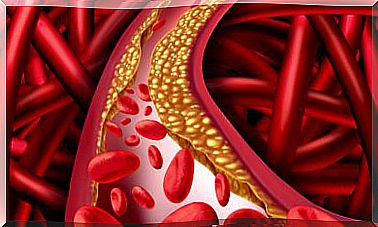6 Psychological Disorders That You Can Acquire Throughout Your Life
Psychological disorders often interfere with normal activities of the person. We present you some examples.
There are several psychological disorders that can take place throughout life. Some develop in childhood or adolescence. Others, however, from adulthood.
As observed in the Diagnostic and Statistical Manual of Mental Disorders (DSM), there are different sets of symptoms that cause emotional distress and even alter people’s behavior.
On the other hand, depending on how these signals are expressed or what their duration is, we will speak of a greater or lesser level of severity.
To see it in more detail, here are some disorders that you may not have known about.
Psychological disorders that can develop at different times of life
As a consequence of the learning history of each individual, the manifestation of some behaviors is sometimes dysfunctional. In other words, the experiences that each person has largely determine the type of responses they give.
In cases where these fail to adapt to the demands of the environment, generate emotional discomfort or even health risks, we could speak of what has been called a ‘disorder’. Let’s see what some of them are.
1. Major depression
As stated in the fifth edition of the DSM, major depression is one of the depressive disorders. This is one of the main causes of disability and loss of quality of life worldwide. Its main symptoms include:
- Persistent sadness
- In children and adolescents, the mood may be based more on irritability.
- Decreased interest or pleasure in all or almost all activities.
- Feelings of worthlessness or excessive guilt.
- Variations in appetite or body weight without dieting.
- Sleep disturbances
- Fatigue or loss of energy.
Such manifestations cause significant interference in different settings (family, professional, etc.) and are not due to substance use or the presence of other diseases or disorders.
2. Post-Traumatic Stress Disorder (PTSD)
Under the category of ‘Trauma and Stressor Related Disorders’ is post-traumatic stress disorder. Conditions for diagnosing it in children over 6 years of age, youth, and adults involve the following criteria:
- Exposure to events that are life-threatening or involve sexual violence or serious harm. The experience is direct or it can also occur indirectly (having seen or having knowledge of an event of this type).
- The presence of symptoms such as memories and dreams related to the traumatic event and physical, emotional and avoidant reactions to stimuli that symbolize or resemble said episode.
- Memory alterations when trying to think about the event and changes in mood and perception of oneself and the environment that surrounds them.
- The heightened alert response, which is expressed, for example, in sudden anger or trouble sleeping or concentrating.
If the aforementioned signs persist for more than a month and there are no other simultaneous conditions that explain the discomfort, it is likely that it is a case of PTSD.

3. Obsessive Compulsive Disorder ( OCD )
According to DSM-5, the following circumstances occur in Obsessive Compulsive Disorder:
- The presence of obsessions, which are defined as recurring thoughts, impulses or images that are experienced as alien and that in most cases generate anxiety or discomfort.
- Compulsions also often take place. These consist of behaviors or ideas of a repetitive nature and, even, regulated with which the subject tries to ignore or suppress the obsessions and thus alleviate the discomfort that they cause.
- However, these attempts are exaggerated or do not respond in a realistic way to the feared event they are intended to mitigate.
Such acts involve a significant investment of time each day (more than an hour, for example) and affect the functioning of the person in different contexts such as work or social relationships.
4. Generalized Anxiety Disorder ( GAD)
Generalized Anxiety Disorder is characterized by a constant feeling of worry, which is associated with symptoms such as:
- Feeling of lack of control over the anguish that is experienced.
- Nervousness.
- Decreased energy or concentration.
- Difficulty sleeping or getting optimal rest.
- Irritability.
As a 2016 study published in the journal Psychological Medicine indicates , it appears that early adversities in childhood are related to greater activation in certain areas of the brain. This type of response would explain how the processing of certain stimuli also has to do with feelings of anxiety in adulthood.

5. Phobias are another group of psychological disorders
Phobias are disorders in which there is excessive anxiety for specific elements or experiences, such as:
- To cats or insects.
- To travel by metro.
- To the fire.
This fear lasts for more than 6 months and generates a notable discomfort in the person who suffers it. In this sense, it should be noted that virtual reality is currently being used in these cases as a means of exposing oneself to feared situations.
6. Sleep disturbances are also a common type of psychological disorder.
Sleep disorders They are due to multiple causes, such as stress, irregular schedules, the consumption of excitators or different diseases.
Among the most frequent alterations are:
- Insomnia, which consists of the difficulty in initiating or maintaining sleep.
- Hypersomnia or excessive sleepiness.
- Narcolepsy, which is expressed by a sudden need to sleep.
- L sleep apnea , in which breathing stops or alters while sleeping.
What to do in cases of psychological disorders
The onset of these disorders can occur at any time in life. What is clear is that the discomfort present in them prevents the person from carrying out their daily activities normally.
Therefore, in such circumstances the first step is to seek professional help. Along these lines, treatments that combine psychological and pharmacological therapy are usually the usual alternative.
Of course, the support of the closest social environment is essential so that those who experience the problem feel understood and encouraged to face it.
In addition, the possibility of knowing the symptoms better will allow us to have a more precise idea to act in these cases.









